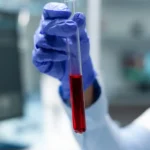In recent years, medical science has made remarkable strides in the field of gene therapy, bringing hope to millions of patients suffering from previously untreatable genetic disorders.
One such groundbreaking development is Zolgensma, a gene therapy that has shown great promise in the treatment of Spinal Muscular Atrophy (SMA).
This article will provide a comprehensive overview of Zolgensma, its mechanism of action, clinical applications, and its impact on the lives of SMA patients.
Understanding Spinal Muscular Atrophy (SMA)
Before delving into Zolgensma, it’s essential to understand what SMA is. SMA is a rare and often debilitating genetic disorder that affects the motor neurons in the spinal cord.
It leads to muscle weakness and atrophy, causing difficulties in movement, breathing, and even swallowing.
It’s a devastating condition that primarily affects infants and young children, robbing them of the ability to perform basic motor functions.
Zolgensma: The Miracle Gene Therapy
Zolgensma, a brand name for onasemnogene abeparvovec, is a gene therapy developed by Novartis Pharmaceuticals.
Approved by the U.S. Food and Drug Administration (FDA) in May 2019, Zolgensma represents a significant breakthrough in the treatment of SMA.
It falls under the category of gene replacement therapy, a novel approach to tackle the root cause of genetic disorders.
Mechanism of Action
Zolgensma works by delivering a functional copy of the missing or mutated SMN1 gene to the patient’s cells.
SMA is caused by a deficiency of the survival motor neuron (SMN) protein, which is vital for motor neuron health and function.
Zolgensma utilizes a viral vector to carry the corrected SMN1 gene into the patient’s cells.
Once inside, the new gene begins producing the essential SMN protein, thus addressing the underlying cause of SMA.
Clinical Applications
Zolgensma is primarily indicated for the treatment of pediatric patients with SMA, including those diagnosed with Type 1 SMA, the most severe form of the disease.
Early intervention is crucial for the best outcomes, and Zolgensma is designed to be administered in infants as young as a few weeks old.
Clinical trials have shown remarkable improvements in motor function and survival rates in treated patients, offering a ray of hope to families affected by this devastating disease.
The Impact of Zolgensma
The approval and availability of Zolgensma have had a profound impact on the lives of SMA patients and their families.
It provides new hope and a chance for a better quality of life, reducing the need for constant medical interventions and improving the overall prognosis.
Zolgensma offers the possibility of reaching developmental milestones that would otherwise be unattainable for SMA patients.
Why is Zolgensma So Expensive
The Price of Innovation – First and foremost, it’s essential to recognize that Zolgensma is a product of groundbreaking innovation in the field of gene therapy.
Developing and bringing such cutting-edge treatments to market is a complex and costly process.
The research, development, and clinical trials required for gene therapies are resource-intensive endeavors that span many years.
Small Target Patient Population – Another factor contributing to the high cost of Zolgensma is the small target patient population.
SMA is a rare genetic disorder, and Zolgensma is primarily indicated for infants and young children diagnosed with Type 1 SMA, the most severe form of the disease.
With a limited number of potential patients, the cost of research and development must be distributed over a smaller group, making each treatment more expensive.
Complex Manufacturing Process – Zolgensma’s manufacturing process is intricate, involving the production of a viral vector that carries the corrected gene into the patient’s cells.
This process necessitates a highly specialized and controlled environment, leading to higher production costs.
The complexity of the manufacturing process contributes to the overall cost of the therapy.
Regulatory and Compliance Costs – To ensure the safety and efficacy of Zolgensma, regulatory bodies like the U.S. Food and Drug Administration (FDA) and the European Medicines Agency (EMA) have stringent requirements for clinical trials, quality control, and post-marketing surveillance.
Complying with these regulations adds to the overall cost of developing and producing Zolgensma.
Unique Pricing Model – The cost of Zolgensma is further influenced by a unique pricing model. Instead of a one-time payment, Novartis, the manufacturer of Zolgensma, offers installment payment options to help alleviate the financial burden on families.
While this may make the therapy more accessible in the short term, it can lead to a higher overall cost due to interest on payments.
Insurance Coverage – Many patients rely on insurance coverage to access Zolgensma.
Insurance companies often negotiate prices with pharmaceutical manufacturers.
However, if a patient’s insurance doesn’t cover the treatment or if they face high deductibles, co-pays, or out-of-pocket maximums, the cost of Zolgensma can remain a significant financial burden.
Addressing the High Cost of Zolgensma – The high cost of Zolgensma has sparked discussions and debates within the healthcare industry and among policymakers.
Advocacy groups, patients, and their families are calling for more affordable access to this life-saving gene therapy.
Negotiations with pharmaceutical companies, government subsidies, and insurance reforms are some of the strategies being considered to address the issue.
Conclusion
Zolgensma, a revolutionary gene therapy, has brought newfound hope to patients and families affected by Spinal Muscular Atrophy.
With its remarkable mechanism of action and proven clinical applications, Zolgensma represents a significant step forward in the treatment of this devastating genetic disorder.
As medical science continues to advance, gene therapies like Zolgensma provide a glimpse into a brighter and more promising future for individuals with rare genetic conditions.







